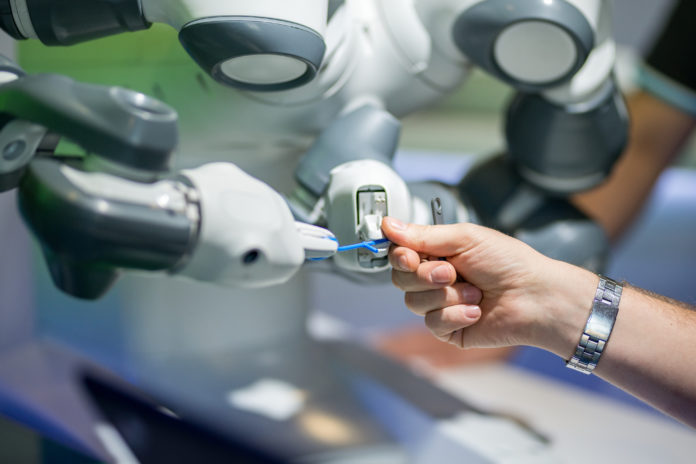By now you have probably come across the numerous statistics on the expected massive growth of collaborative robots. Here is a slight recap: one report predicts a CAGR of 57% leading to a $4billion market by 2023 while another estimates that by 2020, 150,000 cobots will be in operation worldwide.
That is exciting news for both cobots (collaborative robots) manufacturers and the business communities across various industries.
Why?
With respect to cobot manufacturers, this is exciting news because they get a chance to expand their profit margin by rising to the challenge of meeting the demand for supply as robot use grows.
Also, particularly with leading cobot manufacturers, there is an opportunity to set the standard upon which all future collaborative robots innovations will refer to.
Finally, the expansion of the collaborative robot industry as a whole thanks to new jobs, new innovations, and research.
Regarding the business communities in the various industries, this is exciting news because there is a chance to inject more productivity in the daily operations leading to a considerable profit margin.
However, for this massive growth to actually become a reality, there needs to be a complete change in the mindsets of people and the total acceptance of cobots as a premier solution to issues plaguing the various industries.
So, what exactly needs to be done?
1. SMEs Must Move Beyond Tentatively Using Robots to Fully Embracing Them
SMEs have made huge strides in their incorporation of collaborative robots into their daily operations. However, the numbers are far from satisfactory.
SMEs make up over 90% of key economies such as Australia, the UK, and the United States. In emerging economies such as Asia, SMEs contribute around 60% of total employment according to the world bank.
With such huge numbers, it follows that unless SMEs completely embrace robotics, then achieving the predicted growth in the robotics industry will prove rather difficult.
The OECD (Organization of Economic Corporation and Development), noted that SMEs were lagging behind in digital transition in a 2017 report. They gave an example observed in OECD countries where the ERP business software that manages information was used by over 70% of large firms while less the 20% of SMEs were using the software.
The numbers are equally disproportionate when it comes to robotics use. While large firms have made the transition and are reaping the benefits, SMEs are still not fully convinced. The moment SMEs realize the benefits robots offer such as high ROI, increased productivity, lower labor costs, and a faster production process, then and only then will the 57% CAGR estimate become a reality.
2. The Human WorkForce Must Fully Understand and Accept That Robots Do Not Take Away Jobs, But Instead Create Them
The notion that robots are job stealers was behind a lot of negative reactions towards robots initially. While that sentiment has died down, it is still common for entities to avoid robotic automation because the employees are convinced they will lose their jobs.
What everyone should note, especially employees, is that collaborative robots are designed to work alongside humans. That as the robots take over the picking and placing, the human employee can be in charge of giving it commands and placing products in the work envelope whenever the robot accomplishes a certain task.
In addition, instead of the back-breaking work, the human workforce had to do, they are freed up to do more meaningful tasks. When this happens, when the human workforce completely accepts to work hand in hand with robots, then the growth estimated will cease to become a prediction and become a reality.
Summary
Time will tell whether these amazing statistics will come true. Chances are, a lot of them will. However, for that to happen, then adoption by SMEs and a complete acceptance of collaborative robots must first occur.










